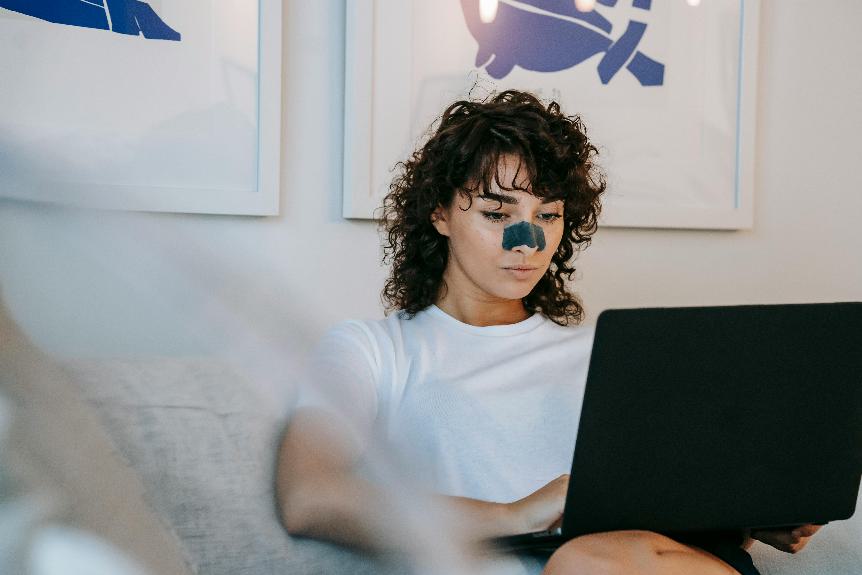Microfiber couches are popular for their durability and comfort, but they can get damaged. To fix this and make the couch last longer, follow these steps:
- Examine the damage to figure out what materials and methods to use.
- Prepare the damaged area by cleaning it for a secure patch.
- Choose a patch material that matches the couch.
- Apply adhesive carefully to attach the patch securely and neatly.
- Blend the patch into the existing fabric to make the repair look seamless.
Assess the Damage
Before repairing a microfiber couch, thoroughly inspect the tear to determine the best repair method. Assessing the size and location is crucial to decide between a do-it-yourself approach or professional help.
Start by cleaning the area around the tear to remove any dirt that could prevent the repair materials from sticking. Next, trim any loose threads with scissors to prevent further unraveling and to prepare the fabric for adhesion.
Check the fabric edges. If they are frayed, apply fabric glue to stop more damage. Choose the right repair material based on the tear's size. Small tears may need just fabric glue, while larger ones could require iron-on adhesive tape or a patch for a stronger bond.
Take care to assess and prepare the damaged area properly to ensure a durable and discreet repair. Rushed or improper fixes can result in more damage or an unsightly couch.
Gather Necessary Supplies
Gather the following supplies for a successful repair:
- a clean cloth
- tape measure
- small scissors
- cotton ball
- tweezers
- a curved upholstery needle
- strong upholstery thread in a color that matches your couch
- an iron for applying fusible web
For extensive damage, obtain:
- a piece of matching repair fabric or fusible web
- anti-fray liquid or fabric glue to prevent further fraying
Assess the tear's severity to decide if:
- a patch is sufficient
- professional reupholstery is needed
With these items, you can efficiently repair and restore your microfiber couch.
Prepare the Damaged Area
Prepare the damaged area on your microfiber couch by first trimming any loose threads with small scissors, avoiding further damage to the fabric. If the tear is from a burn, remove the burnt areas to create a clean edge. Apply an anti-fray liquid or a small amount of fabric glue to the edges to prevent unraveling, and let it dry for about one hour.
For small tears, sew the edges together with a needle and thread that matches the couch's color. Use a figure-eight stitch pattern with additional straight stitches for reinforcement.
For larger tears, cut a piece of fusible web larger than the tear. Place it under the tear, align properly, and then iron it on according to the fusible web instructions. This bonds the patch to the couch, creating a strong repair.
Cut the Patch Material
Choose a patch material that matches the couch's texture and color. Cut the patch 1 inch larger than the hole on all sides for a secure repair. Use sharp scissors for a clean cut. If the damage is irregular, the patch should still extend 1 inch beyond the damage's widest and longest points. Align the patch with the fabric's pattern for a discreet repair.
Optionally, cut the patch into a decorative shape and iron it to smooth out wrinkles. Gather all necessary tools and materials before attaching the patch. For sewing, tie a secure knot at the thread's end to ensure the patch holds firmly.
Apply the Adhesive
Apply adhesive to the edge of the tear in a thin layer, covering it completely. This step secures the torn edges and prepares them for further repair. The fabric glue will hold the tear in place for the next steps.
Press the tear's edges together evenly to bond them without using too much glue, which can create a stiff, uncomfortable spot. The right amount of glue will create a strong, yet flexible bond.
For tears over an inch long, reinforce the repair with iron-on adhesive tape on the underside of the tear after the glue dries. This strengthens the area, especially on parts of the couch that get a lot of use.
For complex repairs, like those on seams or in corners, use a curved upholstery needle. Make four straight stitches across the tear to distribute tension and prevent re-tearing. The curved needle helps with sewing in difficult-to-reach areas.
After following these steps, allow the adhesive to dry fully before using the couch to ensure a lasting repair.
Finish and Blend Patch
After the adhesive dries, blend the patch into your microfiber couch with a similar fabric patch. For small holes, apply fabric adhesive directly into the hole, pressing the loose fabric together for a secure bond.
For larger holes, use a patch one inch larger than the tear all around. Place the patch underneath the torn area, ironing it for better integration. If the tear is large, consider shaping the patch or using a pre-made applique with adhesive, then iron it onto the damaged area for a decorative touch.
For a finished appearance, hand stitch the patch edges with a curved upholstery needle to prevent shifting and add durability. This ensures a seamless repair, maintaining the couch's appearance.





